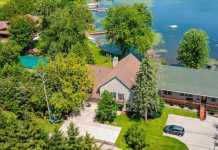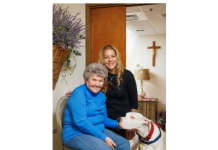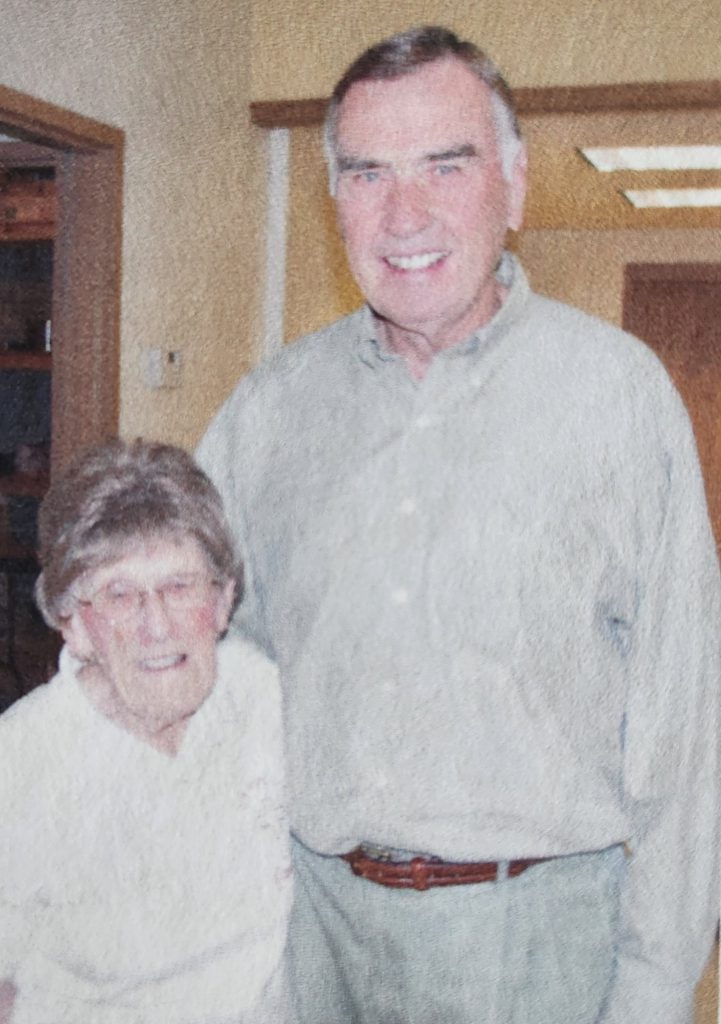Washington Co., WI – For over 15 years, Dave Bohn wrote down memories of his childhood, growing up on the family farm, just south of West Bend on Hwy P and his school days. He hopes his writings will preserve the often-overlooked stories of ordinary farmers and everyday farm life in rural Washington County during the Great Depression through the eyes of a local farm boy.
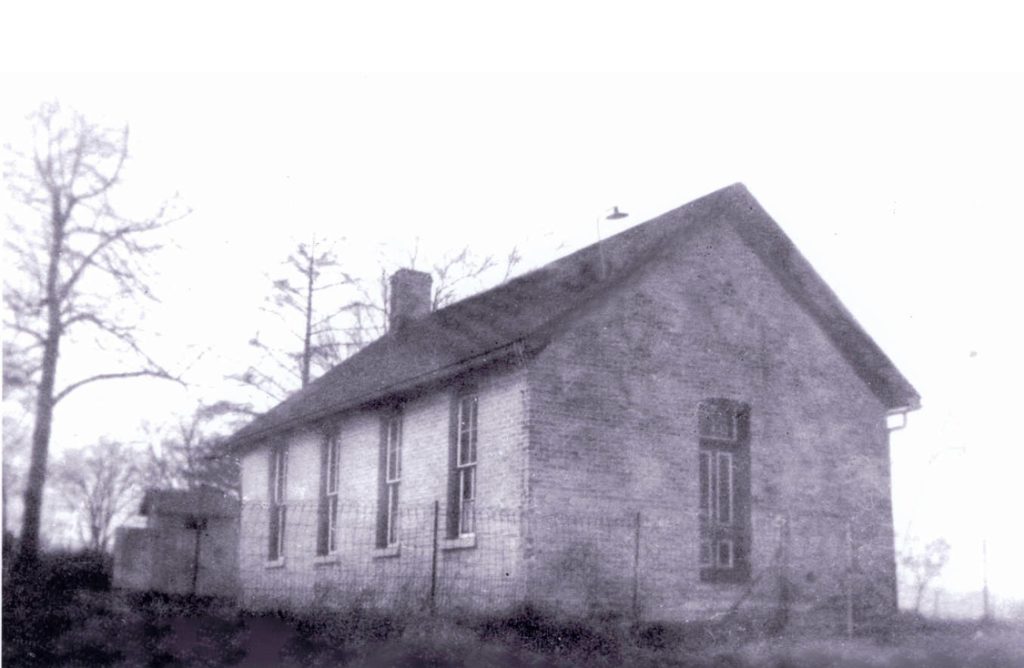
For six years in the 1930s, I went to a one-room country school called Rusco School. I went there for first and second grades and then again for fifth through eighth grades. For third and fourth grades, I went to Holy Angels Catholic School in West Bend so I could receive my First Communion in fourth grade.
Click HERE to SUBSCRIBE to FREE local news at
Washington County Insider on YouTube
We had many fun times during my days at Rusco School. Of course, kids today can’t even imagine what it was like to go to a little one-room school like I did. But those days were a wonderful time in my life that I treasure.
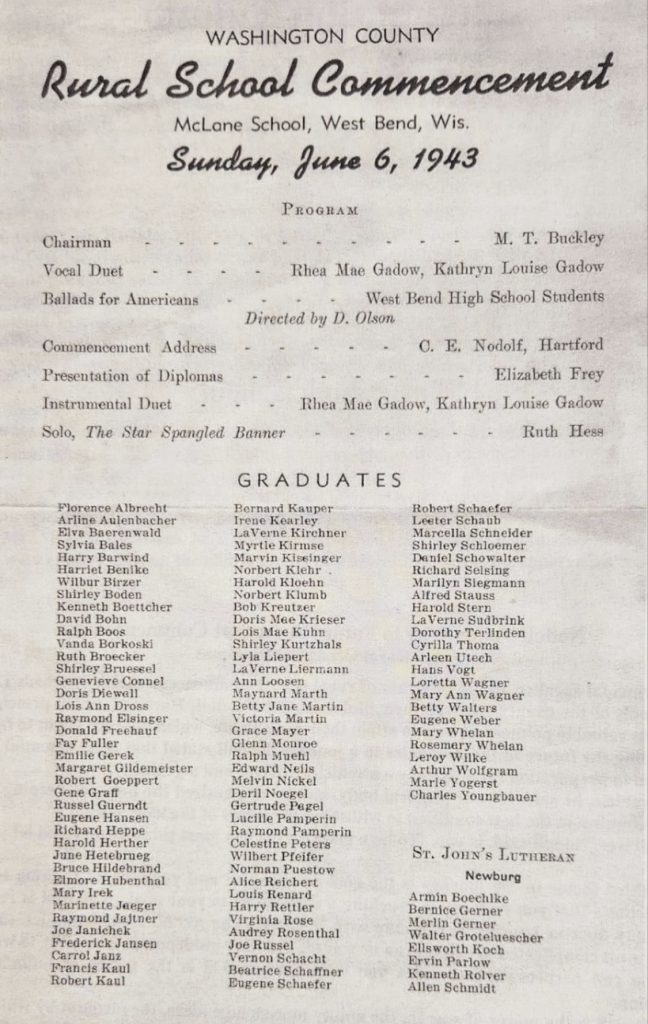
Rusco School was a small country school just down the hill from our farm. It was on the southwest corner of Hwy 55 (now Hwy P) and Rusco Drive. It was one of the first schools in Washington County and began in 1863 and was in use until 1953. The school was supported through a school fund that was collected with the taxes. School times when I went there were from 9 a.m. – 3:15 p.m.
Since we lived just up the hill from the schoolhouse, we would walk to school each morning and we’d also walk home for lunch at noon. We had no kindergarten at this time but since my brother Tom and my sister Mary Ann (Falter) were in school before I was, I did go a few times before I was of school age just to see what school was like.
At Rusco School, we always just wore bib overalls. When I went to Holy Angels, we always had to dress up; knickers and a nice shirt with a tie sometimes, and my sister always wore a nice dress. But at Rusco School, our bib overalls were just fine.
Click HERE for more history recollections by Dave Bohn
Rusco School was a one-room schoolhouse. There was no basement and there was only one door to the school. There was an entry room to take your coats off with about 30 hooks in the coat room. When we went into the school, we would take off our coats and hang them there. I think there was a shelf where we would put our caps and gloves.
In this coat room, there was a water pitcher and wash basin as well. But none of the kids ever washed their hands. If your hands were dirty, they stayed that way until you went home.
Since there was no water piped into the schoolhouse, we had a covered clay crock of water for drinking. The clay crock of drinking water sat on a small table maybe three feet off the ground. There was a dipper that we would use to fill with water and everyone would drink out of the same dipper.
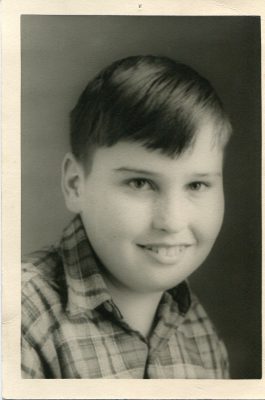
There was a small room that was a library (about 8’ x 10’), which was opposite the coat room. However, you could only enter the library through the classroom. That was it: the classroom, the coat room, and the library. In the library, there were four or five shelves filled mostly with various storybooks for different reading abilities and some textbooks. You just went into the library and took whatever book you wanted. There wasn’t a big selection of books but no matter what you read, it would help your reading ability.
A big round wood-burning stove sat in the back of the classroom. In the winter, Dan Ollinger, the farmer who lived right next to the school, would come over early each morning to get the stove lit and bring in a bucket of water. Parents who had wooded land in the area would bring wood to burn in the stove for heat in the wintertime.
There was a woodshed next to the school where the wood was stored. There was an ax in the woodshed to chop the wood into smaller pieces if they were too big. The eighth-grade boys had the job of splitting wood into pieces that would fit in the stove. After 1936, there was a well for water with a hand pump and one of the older boys would be responsible to bring in water for the day.
The wood stove was our only source of heat, so wood was the fuel used to heat the school at that time. If, for some reason, Dan Ollinger didn’t get the fire going in the morning before the teacher arrived, she would have to start the fire herself when she got there. That didn’t happen too often as the Ollinger boy, Earl, went to school there too.
Finally, there was an outhouse behind the school near the woodshed. We would have to bundle up in the winter to go out and use it. In cold weather, not too much time was spent in the outhouse. The toilet was a two-holer without any partition in between. It was just a plank seat and the area between the two holes was maybe a foot.
I don’t ever remember using the outhouse with another kid in there, but maybe the second hole was a slightly smaller size for the little kids. I don’t really remember though. The toilet paper was yesterday’s newspaper. Lime was used to keep the smell under control. The lime was poured down the hole every few days. This helped absorb the odor and helped compost the contents of the outhouse. Using lime was common for all outhouses at the time. Lime is a stone crushed really fine and the stone was very easy to come by, as there was a lot of limestone in the area.
The school site was about two acres and there was an old graveyard from the last century on the school grounds with a fence around it. It was in the back near the outhouse. It was not kept up at all at the time and was completely overgrown with brush and trees, as it still is today.
The teacher at Rusco School would teach all eight grades. There was a total of about 25 kids going to school there, so there were only three or four students in each grade. There were two other kids in my first-grade class, and the entire school had 20 kids that year. When I was in eighth grade, there were just two of us in my class. Before that, there were three or four kids in my class, except when I attended Holy Angels School where there were over 45 kids in my class.
In the classroom, we each had an assigned desk. We would lift the lid to store our books inside. There was an inkwell, but by the time I was in school, we weren’t using ink any longer, we just used pencils.
At 9:00 each morning, we would start the school day with the Pledge of Allegiance. When it was time for my class, we would be called up to the front of the room to spend maybe 20 minutes with the teacher teaching us. Then we’d go back to our desks and study on our own and do the assignment that the teacher gave us. If I had a question, I would raise my hand, and the teacher would call on me and answer my question. That would happen even if the teacher was teaching another grade level at the front of the class.
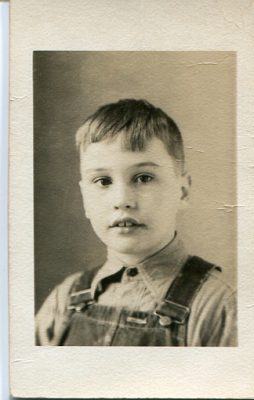
We did get a Weekly Reader each week in school. If I remember correctly, each kid would get one. It was a little newspaper that had news and events, both world news and Wisconsin news. The articles were written for school-age kids. The teacher would take a few articles from the Weekly Reader each week and discuss them in class, as it was an educational newspaper with news of the week. I think it may have been published by the state, but I’m not sure.
My time in first and second grade was not too eventful. Each day, we had a 15-minute recess in the morning at 10:15 and one in the afternoon when we could go outside and play. We had a one-hour break at noon for lunch and recess. When I was in first grade, at the morning recess, somehow, I thought we could go home and eat lunch, just as we would at noon.
So, I walked back home for lunch, but Mom sent me back to school. When I got back to school, recess was over and no one was on the playground. I guess I felt foolish that I didn’t know better. I couldn’t face the teacher and the school kids so I decided to spend the rest of the morning in the swamp on Dad’s land, which was just across the road. There was a little knoll on the ground, about 30’ x 20’, where it was dry with a few trees on it. There I spent the rest of the morning.
I just sat there doing nothing. It was a long time to sit for a 6-year-old boy. I walked home when it was lunchtime, ate my lunch, and went back to school for the rest of the day like nothing happened. I never did tell Mom what I had done. I’m sure the teacher knew where I had been and told my parents, but no one ever said anything to me. I must have given some kind of excuse to Tom and MaryAnn but I don’t remember what it was about.
At recess time, we would go outside to play if the weather was ok. In the winter, we almost always went sledding on a hill on the school grounds in the back of the school. The hill ran to the west and ended at the creek. Sometimes we built a snowman or a fort during recess. If the weather was too cold and we had to stay inside, the older kids would play the card game, Sheepshead.
When the weather was warmer, we would play Prisoner’s Base and Pom Pom Pull-Away. I can’t remember exactly how they were played, but there were two teams against each other with lots of running. In good weather, we would almost always get a softball game going. The boys would play just outside of the fenced-in cemetery.
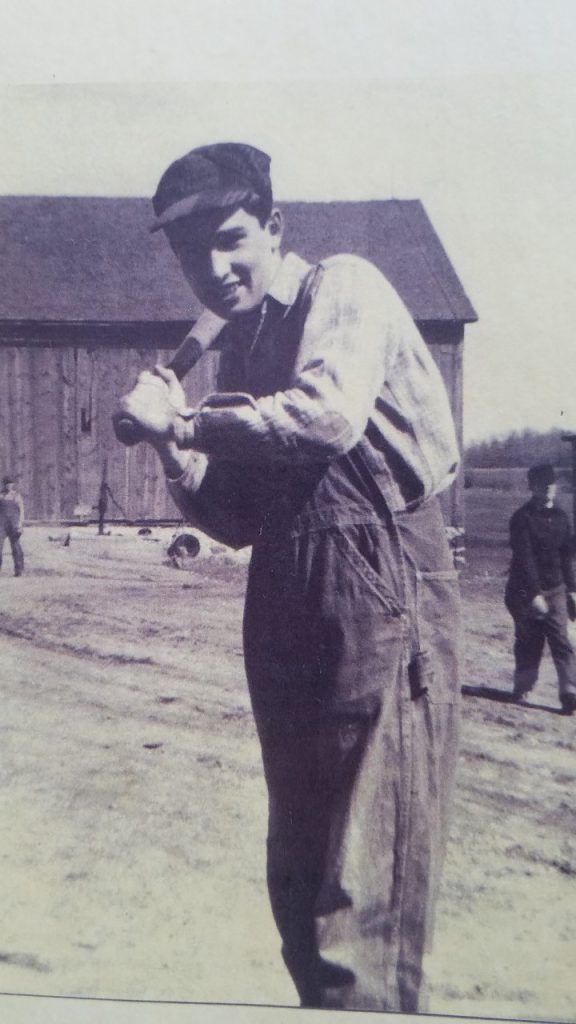
Sometimes the ball would be hit into the cemetery, and someone would just go in and get it but it wasn’t a big deal. Whatever we were playing, there was never enough time to have a winner in a 15-minute recess, so it usually would end with an argument about nothing.
Every year in spring, there was a school picnic that was held on a weekend on the school grounds. All the kids and their parents were invited. People dressed up for the picnic, as I’m sure they looked forward to it. We usually had a baseball game and the parents would join in playing. I think it was the parents against the kids, but I’m sure they let the kids win a few games. I think families brought their own lunch, but the school would have ice cream for everyone, which was a real treat for us. So, it was kind of an Ice Cream Social.
One of the kids, Robert Hosp, always played the accordion for a little music. I suppose the parents would visit and the kids always just played. There is a photo from the School Picnic, taken about 1938, of my brothers, sister, and me sitting on the school driveway gate.
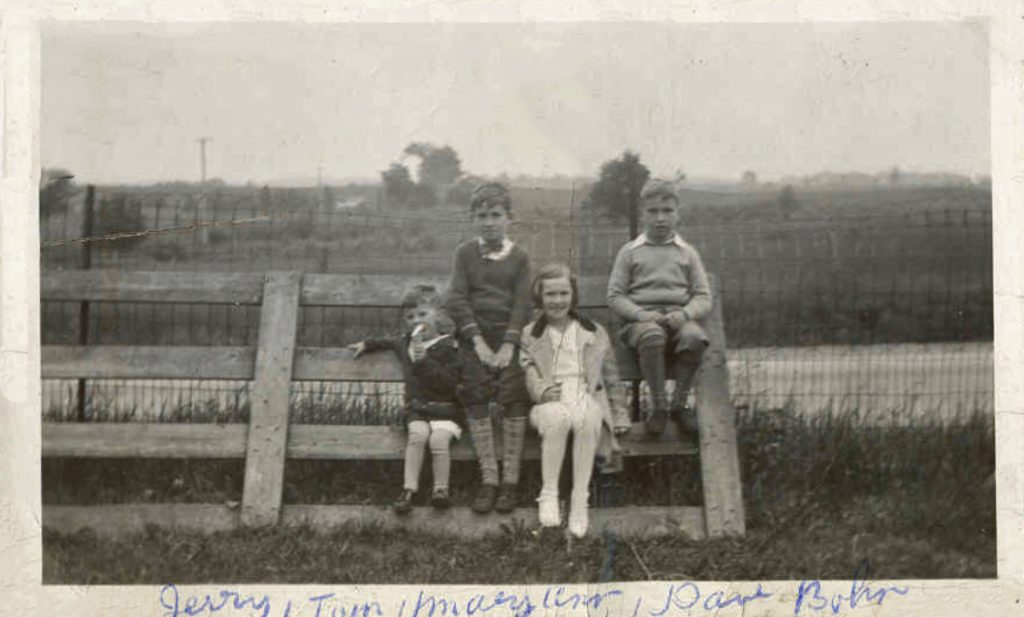
My sister Mary Ann was dressed in a light-colored dress with white stockings. She had fallen before the picture was taken and has a black knee on her stocking, which was dried blood. In the photo, the road in the background is Hwy 55. Beyond that is the swamp I went to during my first-grade morning of playing hooky. The small group of trees in the background is the knoll that I sat on for that long morning.
We had many different teachers at Rusco School. They usually stayed only a year; two years at the most. My first-grade teacher’s name was Miss O’Meara. Ruth was her first name and she lived in West Bend. My second-grade teacher was Miss Reichert (Janet). I was fortunate to run into her years later as a grown man. After two years at Holy Angels School, in fifth grade, I was back at Rusco School and Mr. Wenninger was my teacher. After Holy Angels, I kind of turned the corner and became a wise guy. Holy Angels was really strict, and you towed the line there. Rusco School was much more lenient, and I could get away with more there and I did that year, or at least I tried. But that’s another story.
My sixth-grade teacher was Miss Weckmueller (Evelyn). I still remember her standing by the big old wood stove. It was so cold in the morning when the class would start, she would stand with her back close to the wood stove so she could stay near the heat. The teacher that taught at Rusco School during my seventh and eighth grades was Mrs. Monroe (Loretta). She taught at Rusco for a few years and then transferred to the West Bend School District. Mrs. Monroe was a very good teacher and I liked her, and I do know that by eighth grade I didn’t mind going to school. I met Mrs. Monroe years later, at Decorah School where she was a librarian when my kids went there in the 1970’s.
My mom was a teacher at Rusco School in 1924 -1926, before she was married. That’s when she met Dad, as Dad lived with his family just up the hill from the school. When Mom was a teacher at Rusco School, she received $90 per month. In her first year, she roomed with the Werner family on their farm on the southeast corner of Hwy P and Hwy NN East. She would walk to school most of the time. Her second year of teaching, she lived with the Ollinger family, right next to the schoolhouse. That’s what the teachers did back then: lived with families on nearby farms. I’m not sure but Mom probably just had a small bedroom and ate meals with the family, so it wasn’t much. But she was young, and it was just the way it was back then.
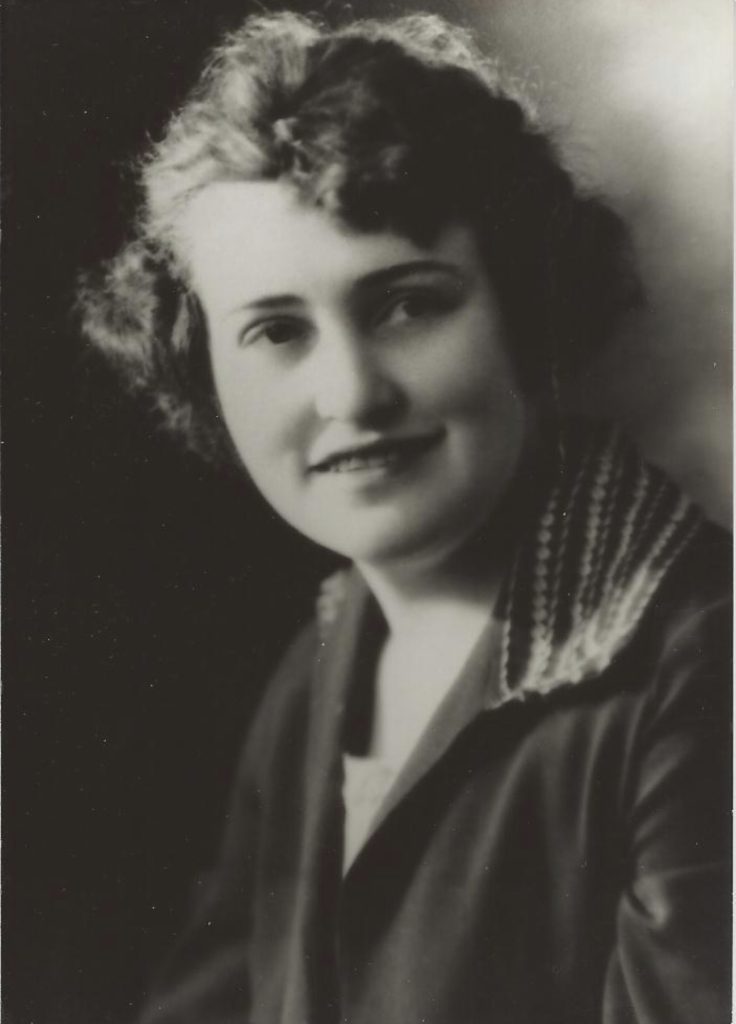
During the 1923-1924 school year, Dad’s family also had a Rusco School teacher, Edward Malone, live with them. I still remember Dad talking about him. During my time at Rusco School though, the teachers drove cars so they could live wherever they wanted. Many of them lived at home.
When I graduated eighth grade, there were only two kids in my grade, me and a girl, Arleen Utech. There was a Rural School Graduation ceremony at McLane School that was just for the rural school students in the entire area. I walked from our farm on Hwy P to McLane School on Chestnut Street in West Bend for Commencement. I think it was for the graduating kids only so my parents didn’t come to the graduation.
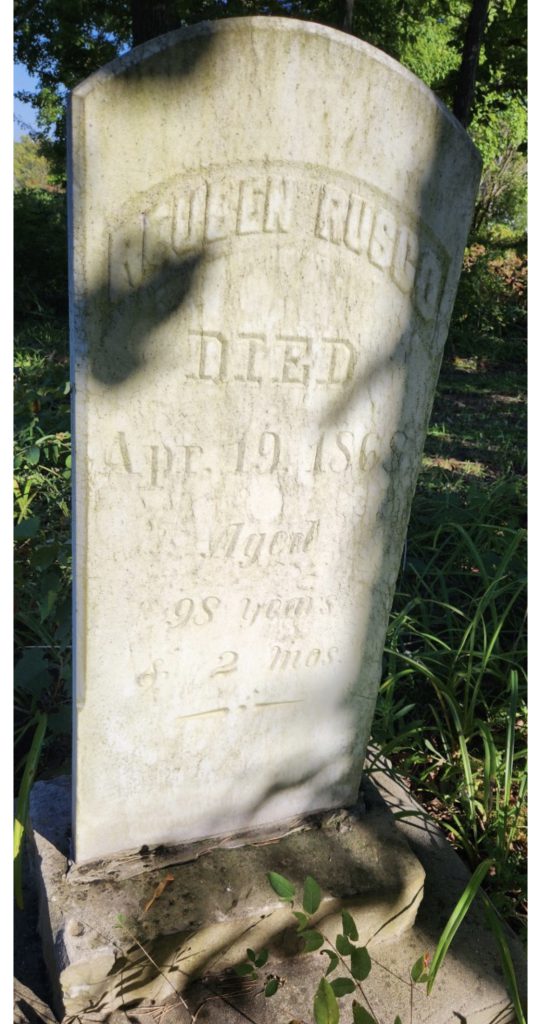
Rusco School and other one-room country schools are no more. But these little one-room schools were all across the country and provided an education for farm kids like me. I really liked Rusco School, and my school day memories are a big part of my life.
It was close to home, and I was with other farm kids, so I felt like I fit in. Since there were so few kids at the school and they all lived on farms nearby, I made lifelong friendships with some of them. The schoolhouse is gone now, and only the cemetery remains. It’s still overgrown, but its namesake, Reuben Rusco’s gravestone, is still standing.


